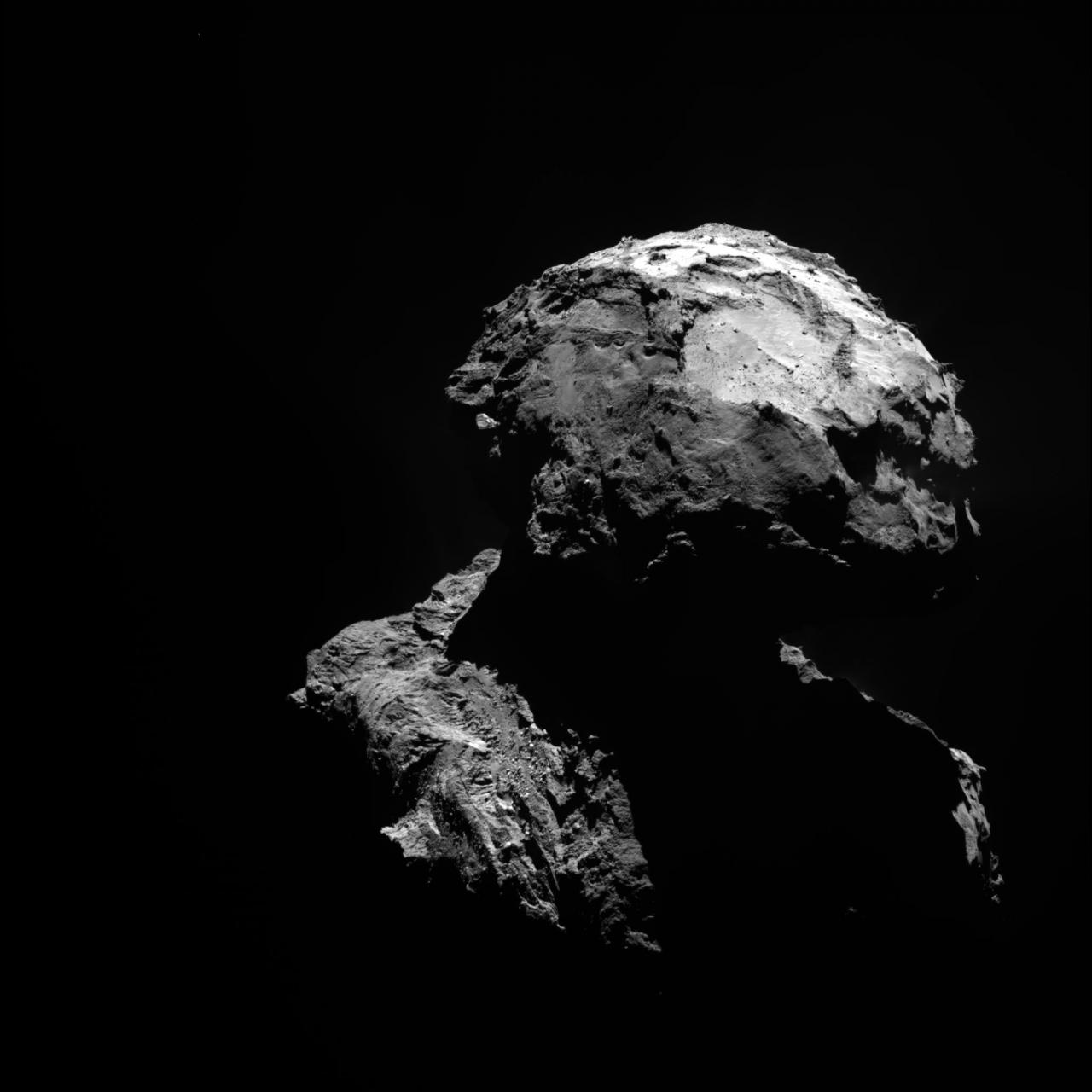Rosetta mission confirms comet 67P to be product of fusion of two independent objects
Cometary lobes collided together very slowly during formation of the Solar System
Cometary lobes collided together very slowly during formation of the Solar System
The Rosetta mission of the European Space Agency (ESA), which is travelling to the innermost regions of the Solar System on orbit around comet 67P Churyumov-Gerasimenko, is still providing data about that comet’s nucleus. Researchers taking part in the mission - among them, scientists from the Graduate Center for Scientific Research (CSIC) – have pierced the secret of its irregular shape, reminiscent of a little rubber duck: the comet was the product of the fusion of two independent bodies at the time of the formation of the Solar System.
These new results, published in the last issue of Nature magazine, were obtained through the analysis of images taken by the OSIRIS camera inside the Rosetta probe. The two independent objects that collided to form the comet, of different sizes, are made of very similar material and are characterized by a system of layers not unlike an onion.

ESA/Rosetta/MPS for OSIRIS Team MPS/UPD/LAM/IAA/SSO/INTA/UPM/DASP/IDA
Non violent fusion
“Since the layers of each one of the lobes of the comet are morphologically very uniform, we are quite certain that they were originally primitive, independent objects, formed by accretion of material from approximately the same region which later fused together slowly,” says José Juan López Moreno, CSIC researcher at the Institute of Astrophysics of Andalusia,.
In fact, until now, an interaction between two bodies in the Solar System that was not excessively violent had never been observed. “Our study is relevant because it is the first trace of a non-violent interaction between two bodies inside our planetary system”, says the CSIC researcher.
The peculiar shape of 67P, its irregular morphology, disclose an unexpected image of its interior and allow scientists, for the first time, to reconstruct the structure that lies several hundred meters under the surface of a comet by inference from geo-structural observations.
The Rosetta probe has been orbiting around comet 67P since August 6th, 2014. So far, the mission has been able to determine that its density is half that of water and that, given its size, it must be 80% empty. Although accurate images of some parts of the southern hemisphere are lacking, nineteen different regions have been classified in the nucleus. The latter are grouped into five basic categories: land covered with dust, fragile material with cavities and circular structures, great depressions, smooth surfaces and regions of consolidated material.
Matteo Massironi et al. The two independent and primitive envelopes of the bilobate nucleus of comet 67P/C-G. Nature. DOI: 10.1038/nature15511
Instituto de Astrofísica de Andalucía (IAA-CSIC)
Unidad de Divulgación y Comunicación
Silbia López de Lacalle - sll[arroba]iaa.es - 958230532
http://www.iaa.es
http://divulgacion.iaa.es

